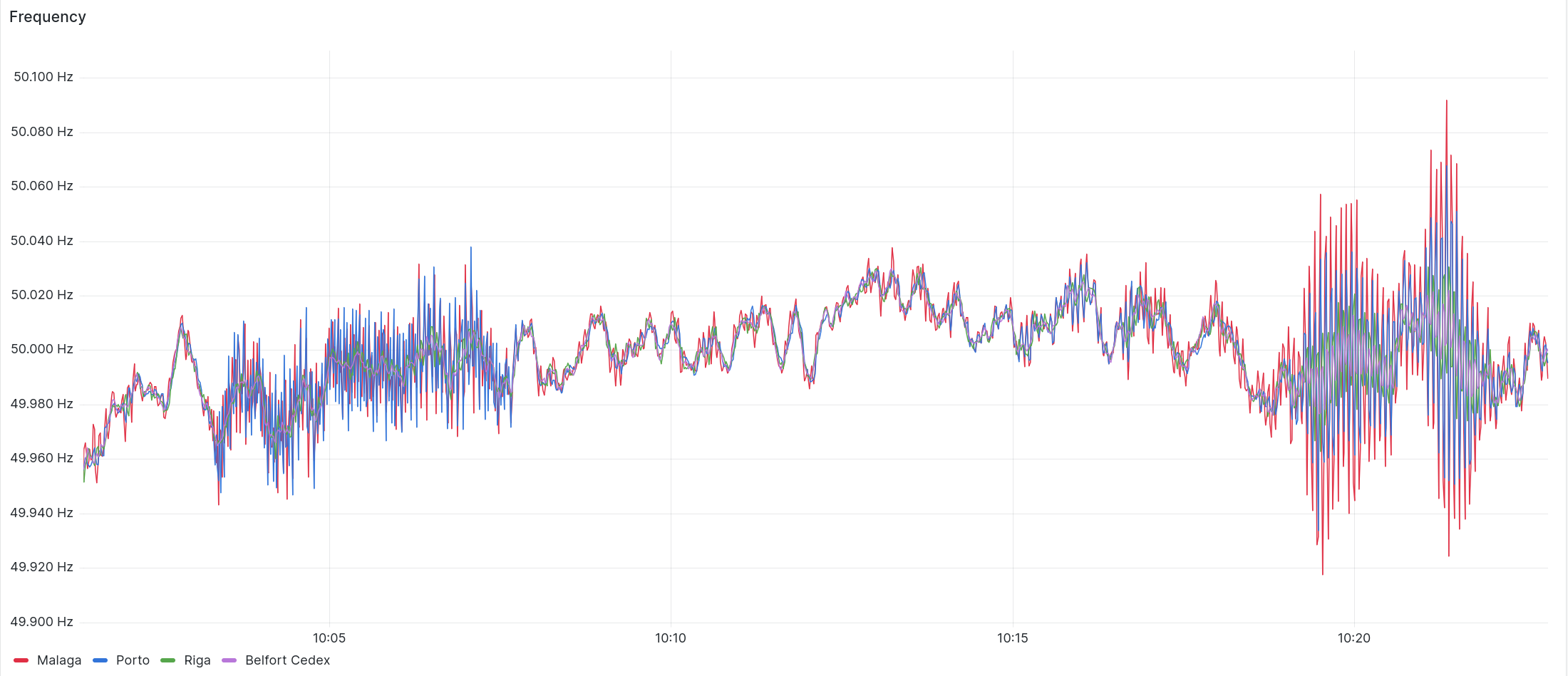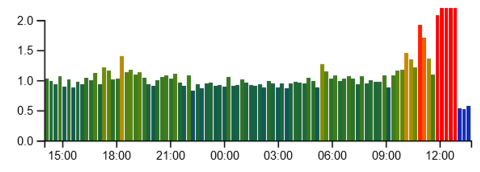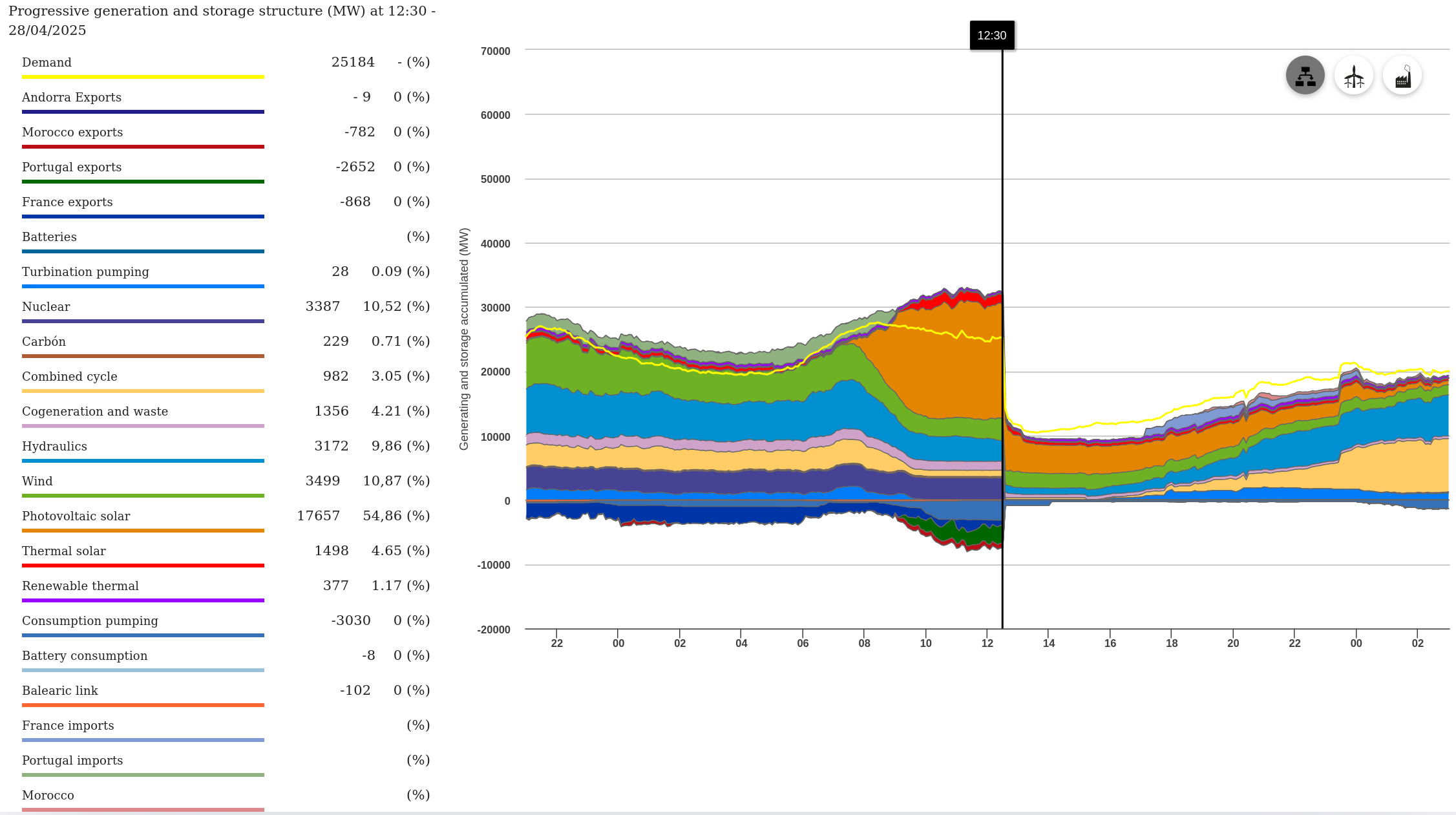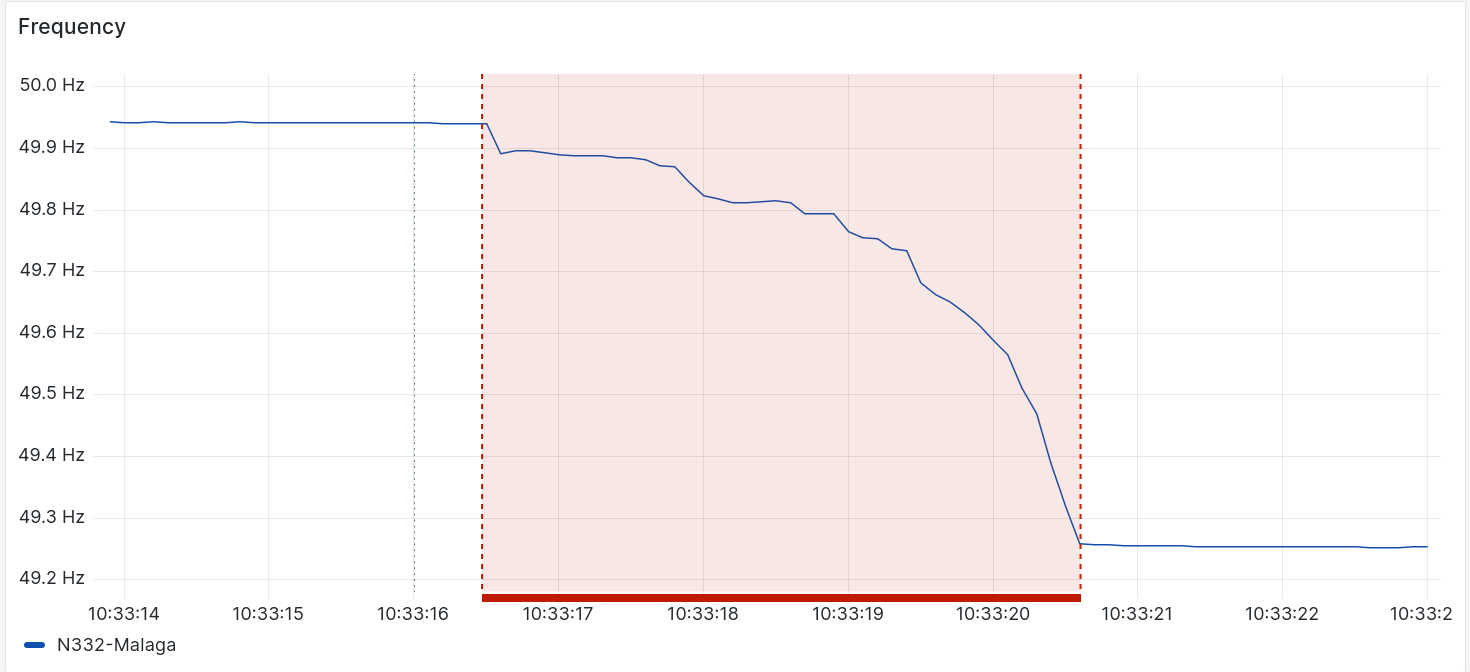Blackout - Iberian Peninsula
Update 10.05.2025: In the meantime, a further statement has been published by ENTSO-E which, among other things, contains a chronological sequence of events prior to the blackout confirming the observations described here.
On April 28, 2025, a massive power grid blackout occurred on the Iberian Peninsula, affecting Spain, Portugal and parts of southern France. Millions of people were affected, rail traffic came to a halt, traffic lights stopped working and communication networks were disrupted. The exact cause of the power outage is still under investigation. It is suspected that a combination of technical faults and grid instability led to the widespread shutdown. In particular, interregional oscillations and frequency fluctuations are being discussed as possible triggers. The European Commission, together with the national authorities, has launched a comprehensive investigation to determine the exact causes of the outage and prevent future incidents. Thanks to the extensive coverage of the Gridradar Wide Area Monitoring System (WAMS), we were able to gain a detailed insight into the grid dynamics involved in the event.
Interregional oscillations: Indications of systemic instability
The analysis of our high-resolution measurement data from different regions shows two remarkable interregional oscillations in the European power grid that occurred in the 30 minutes before the large-scale outage on the Iberian Peninsula.

Figure 1: Interregional oscillations
The first oscillation occurred at around 10:05 UTC and was most dominant in northern Portugal. A second, stronger oscillation followed at around 10:20 UTC, with a major focus in southern Spain. Strikingly, this oscillation was far more pronounced in the Baltic region than in the center of Europe. The temporal correlation and geographical extent of these oscillations indicate a systemically relevant coupling that affected the entire continental European network - far beyond the Iberian region.

Figure 2: Illustration of the Gridradar Stability Index on 28.04.2025
The Gridradar Stability Index based on this measurments indicates highly significant instability during this period.
Smaller frequency drops just before the blackout: Indication of generation unit outages

Figure 3: Frequency response right before the incident in different regions of the interconnected grid
At 10:32:57 UTC, the Spanish power grid saw the first abrupt and characteristic frequency drop of 26 mHz within 200 milliseconds, followed by a frequency drop in Portugal. The second frequency drop of 47.7 mHz in just 100 milliseconds occurred at 10:33:16 UTC and led to the subsequent power outage. The locality of these rather small but very rapid frequency drops suggest a cascade of events that ultimately led to a complete breakdown of the power supply.
Situation at the time of the final frequency drop with grid disconnection
According to data from Red Eléctrica de España (REE), Spanish electricity production at the time of the outage was 32.185 GW including 54.86% of solar, with a total demand of 32.635 GW including storage and exports to neighboring countries.

Figure 4: Production / consumption - Spain according to REE
At 10:33 UTC, with a balanced power grid, there was a sudden loss of 15 GW within less than 5 seconds.

Figure 5: Frequency drop and emergency power supply intervention in Malaga.
This abrupt drop led to a disconnection of Spain from the European interconnected grid.
Conclusions and prospects
Incidents such as the one on April 28, 2025 illustrate the vulnerability of modern power grids to complex systemic disturbances. Analysis of the measurements collected by Gridradar provides valuable insight into what is happening across the entire interconnected grid and the Gridradar Stability Index can provide early indications of systemic instability. A definite cause of the power outage is still unclear. Ongoing investigations by the European Network of Transmission System Operators for Electricity (ENTSO-E) along with national authorities will provide further insights to prevent future incidents and strengthen the resilience of the European electricity grid.
